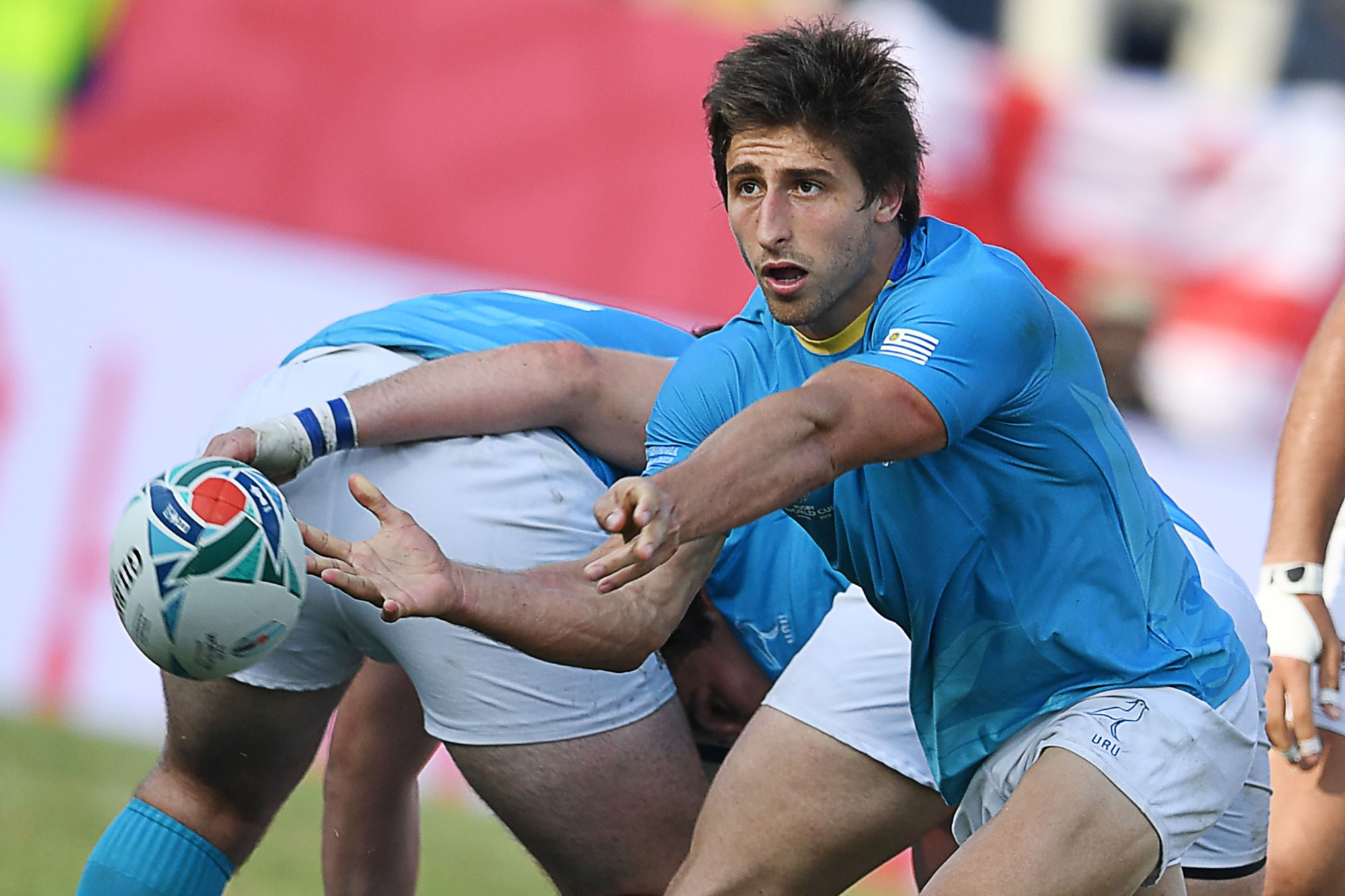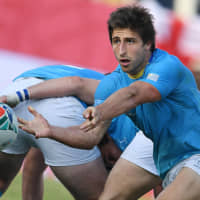Uruguay notched its biggest win at the Rugby World Cup with an opening-game upset of Fiji in Kamaishi, Iwate Prefecture on Wednesday, a result that has made the team a hot topic back home.
"I think that our game against Fiji has given a big impact both inside Uruguay and to the whole world," Uruguay head coach Esteban Meneses said after his team fell 33-7 to Georgia in Kumagaya, Saitama Prefecture, on Sunday.
Francisco Berchesi, an older brother of Uruguay flyhalf Felipe Berchesi, arrived in Japan along with his parents and other siblings a couple of days before the Georgia contest. Unfortunately, the 25-year-old missed the opportunity to see Felipe become Uruguay's hero — scoring 15 points and slotting all of his kicks on the way toward being named man of the match against Fiji — in person.
Francisco said he watched the game on television in the capital, Montevideo, and that "the whole (of Uruguayan) media" was buzzing about rugby after the result.
"Now after the win, every media was talking about rugby," Francisco said before the Georgia contest at Kumagaya Rugby Stadium. "It was really important because it helps popularize the sport."
Expanding the fan base and enlarging the small community of players are two things that will greatly help Uruguayan rugby make further progress. Head coach Esteban Meneses said there are only 4,000 or so playing organized rugby in the country.
Most of those players are either amateurs or semi-pros, although the numbers of pros and semi-pros in the national team have dramatically improved in the last four years.
At the 2015 World Cup in England, Uruguay had only four fully professional players. That number has increased to 22 for this edition, thanks to the Uruguay Rugby Union's efforts to sign contracts with many players in order to allow them to focus on developing themselves and the national team.
This has allowed these players to train more extensively at the high-performance center at Charrua Stadium, the country's main rugby venue. The center has been jointly funded by the union, Uruguay's national government and World Rugby.
The centralized player contracts have helped many of them compete in Major League Rugby, a new North American professional circuit that launched in 2018.
Winger Leandro Leivas is one of the players competing in MLR. The 31-year-old, who belongs to the Toronto Arrows, described the situation as "a dream come true."
But even the 22 contracted players are still more like semi-pros, as they have other jobs off the pitch. Leivas, for example, said he works as a crop trader, while captain Juan Manuel Gaminara works as an accountant.
But Leivas insists increasing the number of professional players will be the best way to raise the country's level going forward.
"I believe that (in) rugby nowadays (it's) really difficult to form a team if you are not 100 percent professional," he said. "Because the level is growing year after year, other countries are growing year after year."
Soccer and basketball are Uruguay's most popular team sports. But Francisco said the union has been active in spreading rugby across the nation.
"(The union) is, in cooperation with the government, taking rugby to schools," said Francisco, who is a former winger for the national team. "For example, the government gives the Uruguay union buses and they take children from areas where rugby isn't popular to Charrua Stadium, which is the Uruguay Rugby Union's main pitch.
"They let them play rugby there and (the kids) enjoy it a lot, so now they're really used to playing rugby."
Los Teros will face two more tough challenges to close out Pool D against Australia (on Saturday) and Wales on Oct. 13.
Gaminara hinted that it would be a tall order for his team to post wins over those traditional powerhouses, but that the squad would try to give a spirited effort in those games in order to further solidify Uruguay's presence on the global rugby map.





